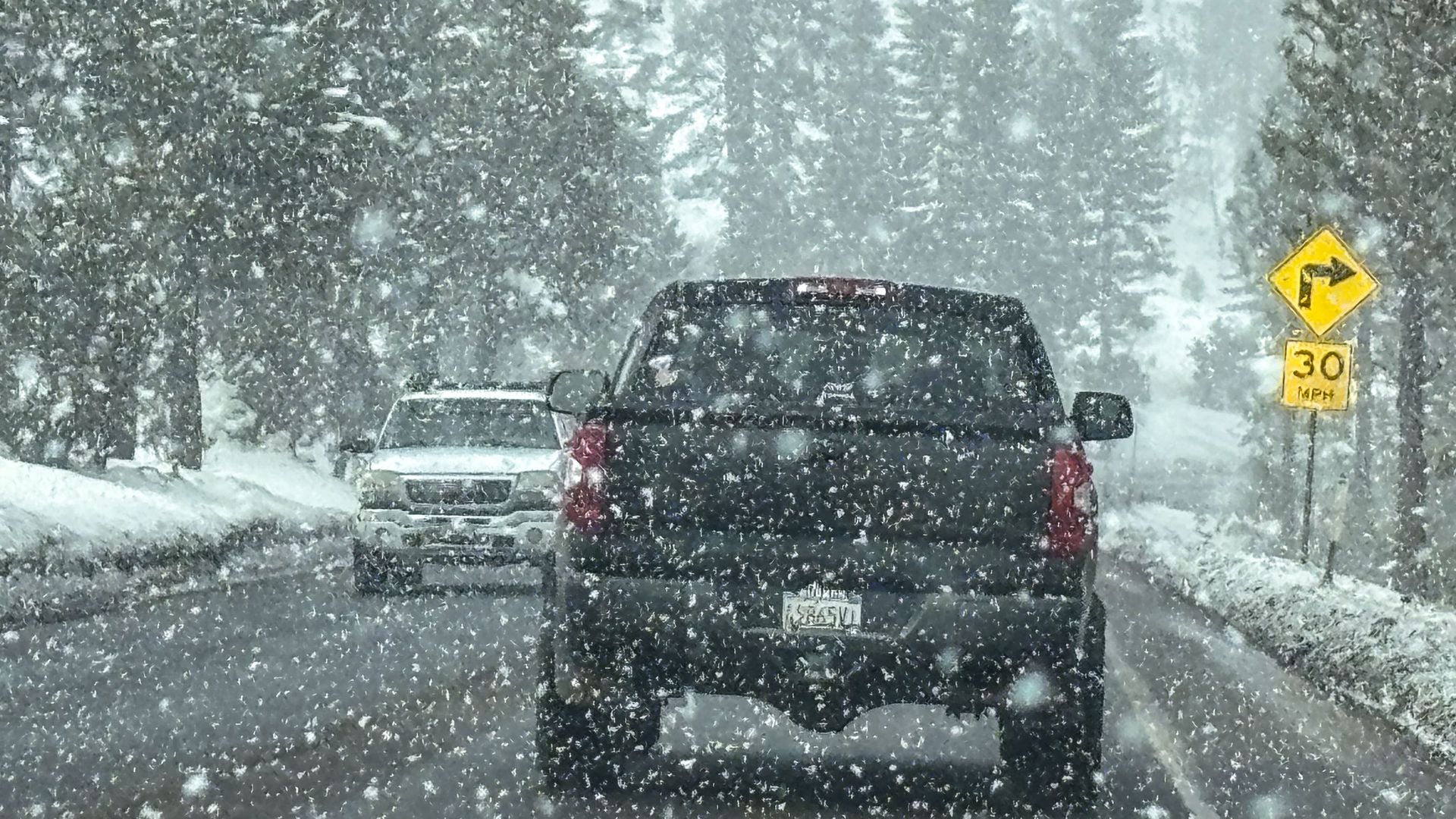The National Weather Service issued a warning that mountain travel will be "extremely dangerous to impossible" from Thursday into the weekend due to a historic blizzard that is expected to dump up to 12 feet of snow on the Sierra Nevada.
The larger picture: According to a NWS forecast discussion, this "extremely potent" winter storm also poses a threat to the higher terrain of Washington and Oregon into Friday and Saturday. The discussion indicated that consequences would include gusty gusts, three inches of snowfall per hour, and coastal rain.
The Sierra Nevada poses the greatest concern, with the NWS predicting "numerous road closures" in the impacted mountain ranges.
From 4 a.m. on Thursday until 10 a.m. on Sunday, the NWS issued uncommon blizzard warnings for the Sierra, Northeast Foothills, Motherlode, western Plumas, and Lassen area.
It's unusual that the Lake Tahoe region be included in the blizzard warnings.Forecasters at the NWS Sacramento office discussed how "severe tree damage and protracted power outages" were probable in the event of "whiteout conditions with near zero visibility," which would be brought on by expected snowfall rates of 2-4+" per hour and frequent wind gusts of 65 to 75 mph or greater.
From Thursday through Saturday morning, the northern and central Sacramento Valleys were under a wind advisory.
These snowfall totals—well over 100 inches in just four days—are among the greatest ever predicted for the northern and central Sierra in contemporary forecasting.
At the highest altitudes, winds are predicted to reach speeds of over 100 mph.
At elevations of 7,000 feet above sea level, the Tahoe Basin was expected to receive 4–8 feet of snowfall; cities around Lake Tahoe might receive 2–4 feet of precipitation as well.
Between the lines: The snowfall will assist in bringing the Sierra snowpack, which slipped somewhat behind, closer to typical for this time of year
Context: Research indicates that the frequency and intensity of heavy precipitation events are rising due to climate change.
According to Swain and other climate scientists, climate warming coupled with El Niño has caused historic storms to pound California this winter.
Dig deeper Winter whiplash: Why the United States is suddenly being hit by a series of storms?


.png)
